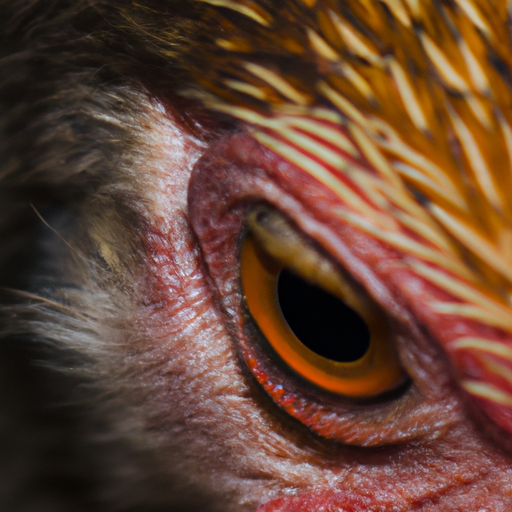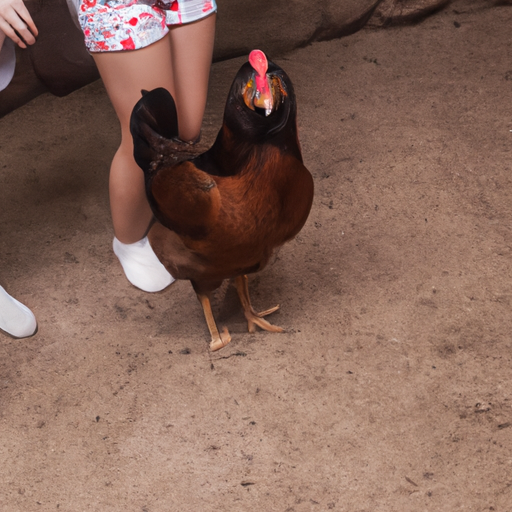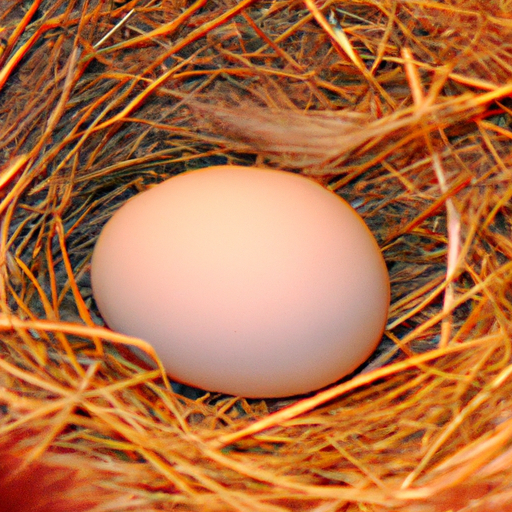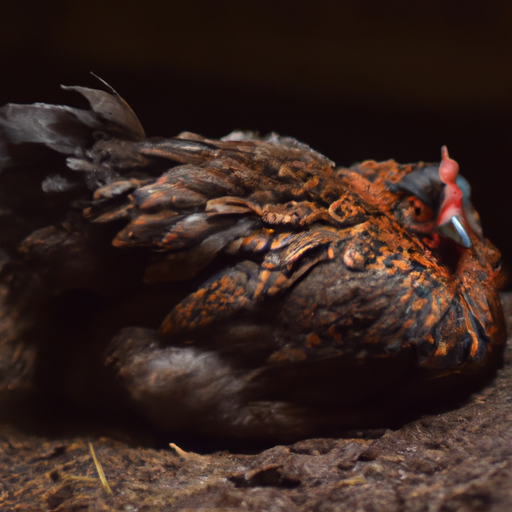In the world of chickens, establishing a pecking order is a fascinating and necessary part of their social structure. You may be surprised to learn that chickens are not just aimlessly pecking at each other, but rather engaging in a complex hierarchy that determines their rank within the flock. Understanding how chickens establish this order can provide insights into their behaviors and interactions, shedding light on their social dynamics. So, let’s take a closer look at how these feathered creatures establish their pecking order, and why it is an essential aspect of their lives.
The Pecking Order: Explained
Defining the pecking order in chickens
The pecking order is a social hierarchy that forms within a group of chickens, typically in a flock. It is an essential part of chicken behavior and plays a crucial role in maintaining harmony and order within the group. The pecking order determines each chicken’s rank and establishes a clear line of dominance and submission. This hierarchical structure is established through a series of interactions and behaviors displayed by the chickens.
Origins of the term
The term “pecking order” originated in the 1920s from observations of chicken behavior by Norwegian zoologist Thorleif Schjelderup-Ebbe. He noticed that chickens would peck each other to establish dominance and determine their place in the social hierarchy. Schjelderup-Ebbe coined the term “pecking order” to describe this phenomenon, which has since been widely accepted and used in the study of animal behavior.
The importance of establishing a social hierarchy
Establishing a social hierarchy through the pecking order is crucial for the overall well-being and functioning of a chicken flock. It helps maintain order and stability within the group by reducing conflicts and aggression. Without a clear pecking order, chaos and constant fighting for resources may ensue, leading to stress, injury, and decreased productivity among the chickens. Therefore, the pecking order is not only a natural phenomenon but also an essential aspect of chicken social dynamics.
Hierarchy Formation in Chicken Flocks
Establishing dominance through aggression
The formation of the pecking order begins with a display of aggression and dominance by the more assertive chickens. These dominant individuals use pecking, chasing, and other aggressive behaviors to assert their authority over the others. Through these interactions, a hierarchy gradually emerges, with the most dominant chickens occupying the top positions and the less dominant ones occupying lower ranks in the social order.
Observing pecking behaviors
To understand and establish the pecking order, it is crucial to observe the pecking behaviors of the chickens. These behaviors involve physical pecks, where one chicken pecks another on the head or body, and symbolic pecks, where a chicken may peck the ground as a way of showing dominance. Additionally, chickens may engage in chasing, puffing up their feathers, or vocalizing to establish and reinforce their status within the flock.
Factors influencing the pecking order
The formation of the pecking order is influenced by several factors. Age and maturity play a significant role, as older, more experienced chickens tend to assert dominance over younger ones. Size and physical strength also contribute to a chicken’s position in the pecking order, with larger and stronger individuals often occupying higher ranks. Furthermore, genetic predispositions and individual personalities can influence where a chicken falls in the hierarchy.
The Process of Establishing Dominance
Early stages of dominance determination
The process of determining dominance starts as soon as chickens are introduced to each other. Initially, there may be instances of pecking and aggression as the chickens establish a social order. Through these early interactions, chickens test each other’s boundaries and evaluate their relative strengths and weaknesses. These initial encounters lay the foundation for the development of the pecking order.
Physical confrontations and displays of aggression
As the pecking order solidifies, physical confrontations become more intense. Dominant chickens may engage in direct pecking or attacking behaviors towards submissive individuals. These confrontations serve to reinforce the dominance of the higher-ranking chickens and establish a clear hierarchy. It is important to note that these aggressive behaviors are a natural part of chicken social dynamics and should not be confused with excessively violent or harmful actions.
Submission and acceptance
To maintain order within the flock, submissive chickens must recognize and accept the dominance of higher-ranking individuals. Submissive behavior may include avoiding eye contact, crouching or lowering their bodies, or stepping aside when confronted by more dominant chickens. This submission allows for the establishment of a stable pecking order and reduces the likelihood of constant conflicts within the group.
Communication Tactics in the Pecking Order
Vocalizations and calls
Chickens use vocalizations and calls as a form of communication within the pecking order. These vocal signals serve to assert dominance, maintain social order, or indicate submission. Certain vocalizations, such as cackling or crowing, are often associated with higher-ranking individuals, while more submissive chickens may produce softer, quieter vocalizations.
Body language and posturing
In addition to vocal communication, chickens rely on body language and posturing to convey their status within the pecking order. Dominant chickens may puff up their feathers, stand taller, or adopt a more upright posture to display their authority. On the other hand, submissive chickens may hunch their bodies, tuck their heads, or avoid eye contact to show deference to higher-ranking individuals.
Benefits of Having a Pecking Order
Reducing conflict and aggression within the flock
One of the primary benefits of having a pecking order is the reduction of conflict and aggression within the flock. By establishing a clear social structure, chickens can avoid constant fights over resources, such as food, water, and shelter. The pecking order allows each chicken to understand its place in the hierarchy and prevents unnecessary confrontations, ensuring a more peaceful and harmonious environment.
Increased efficiency in resource management
The pecking order also promotes increased efficiency in resource management. With a well-established social hierarchy, chickens are more likely to respect and follow a structured system when accessing resources. This reduces competition, minimizes wastage, and ensures that all chickens have fair access to essential resources. The efficiency that comes with a pecking order ultimately benefits the overall productivity and well-being of the flock.
Promoting overall stability
Another advantage of a pecking order is that it promotes overall stability within the flock. The social structure provides a sense of order and predictability, allowing chickens to feel secure and comfortable in their environment. This stability reduces stress levels among the chickens, leading to healthier individuals and improved overall flock dynamics. When a stable pecking order is in place, the chickens can dedicate more energy and attention to other aspects of their lives, such as foraging, preening, and reproductive behaviors.
Negative Effects of a Pecking Order
Bullying and stress-related issues
While the pecking order serves as a necessary social structure, it can also lead to bullying and stress-related issues among the chickens. Higher-ranking individuals may exert excessive dominance over lower-ranking ones, leading to constant harassment and physical aggression. This bullying can cause stress, anxiety, and even physical harm to the submissive chickens. Additionally, the stress associated with being in a lower rank of the pecking order can affect overall well-being and productivity.
Overly dominant individuals
In some cases, the pecking order may have overly dominant individuals who abuse their power. These chickens may engage in excessive aggression or withhold resources from others, causing further imbalance and tension within the flock. Overly dominant individuals can disrupt the stability of the social hierarchy and lead to increased conflict and resistance among the other chickens.
Outcomes of a disrupted pecking order
If a pecking order is disrupted or constantly challenged, it can have detrimental effects on the flock dynamics. Without a clear hierarchy, chickens may engage in constant fighting and aggressive behavior, resulting in injuries and decreased productivity. In extreme cases, a disrupted pecking order can lead to social chaos, reduced egg production, or even cannibalism within the flock. Therefore, it is essential to manage and maintain a functional pecking order for the well-being of the chickens.
Factors Influencing the Pecking Order
Age and maturity
Age and maturity are significant factors that influence a chicken’s position in the pecking order. Younger chickens are typically lower in rank, while older chickens occupy higher positions. As chickens mature, they gain experience, assertiveness, and physical strength, which contribute to their chances of attaining higher ranks within the hierarchy.
Size and physical strength
Size and physical strength also play a role in the pecking order. Generally, larger and stronger chickens are more likely to dominate and occupy higher positions in the hierarchy. They have a physical advantage over smaller and weaker individuals, allowing them to establish and maintain their dominance through displays of strength and aggression.
Genetic predispositions
Genetic predispositions can influence an individual chicken’s tendency to be dominant or submissive. Some chickens may inherently possess traits that make them more confident, assertive, and inclined to strive for higher ranks within the pecking order. Others may have genetic predispositions towards being more submissive and less likely to challenge higher-ranking individuals.
Pecking Order Dynamics in Different Situations
Introducing new chickens to an established flock
When introducing new chickens to an established flock, the pecking order dynamics can be disrupted or temporarily altered. The existing chickens may perceive the newcomers as a threat to their established hierarchy, leading to initial aggression and confrontations. Gradually, the new chickens will find their place within the pecking order through displays of submission and acceptance, eventually finding their proper rank.
Temporary disruptions in the pecking order
Temporary disruptions in the pecking order can occur due to factors such as illness, injury, or environmental changes. When a higher-ranking chicken becomes weakened or unable to assert dominance, lower-ranking individuals may challenge their authority, causing shifts in the social hierarchy. Once the temporary disruption is resolved, the pecking order usually reestablishes itself as the dominant chicken restores its position.
Managing social dynamics in mixed-species flocks
In mixed-species flocks, where chickens coexist with other poultry or animals, managing the social dynamics can be more complex. Each species may have its own pecking order, which can lead to hierarchical conflicts. It is crucial to provide adequate space, resources, and environmental enrichment to minimize these conflicts and allow each species to establish their respective social structures.
Pecking Order in Commercial Poultry Production
Implications for overcrowded or confined environments
In commercial poultry production, where large numbers of chickens are housed in overcrowded or confined environments, the pecking order becomes particularly significant. Such environments can exacerbate aggression, leading to excessive pecking, stress, and injuries. Implementing management practices, such as providing sufficient space and enrichment, can help alleviate the negative effects of a disrupted pecking order in these settings.
Selective breeding and its impact on the pecking order
Selective breeding practices aimed at improving productivity or specific traits in commercial chicken breeds can inadvertently impact the pecking order dynamics. Breeding for certain characteristics, such as higher growth rates or increased egg production, can lead to changes in behavior, temperament, and social dynamics. It is essential for breeders to consider these potential effects and manage the pecking order dynamics to ensure the well-being of the birds.
Alternative options to reduce aggression
To minimize the negative effects of aggression within the pecking order, various alternative options can be employed. These may include providing environmental enrichment, such as perches, hiding places, and distractions, to prevent boredom and redirect aggressive behaviors. Additionally, nutritional strategies, such as incorporating specific additives or altering feed composition, can help reduce stress and aggression among the chickens.
Conclusion
The pecking order in chickens is a natural and necessary phenomenon that plays a crucial role in establishing social hierarchy and maintaining order within a flock. Through displays of aggression, submission, and various communication tactics, chickens establish a clear rank system that helps reduce conflict, increase resource management efficiency, and promote overall stability. While a functional pecking order is beneficial, it is essential to manage and prevent the negative effects of excessive aggression or disrupted hierarchies. By understanding the dynamics and factors influencing the pecking order, chicken owners, breeders, and farmers can ensure the well-being and productivity of their flocks.




